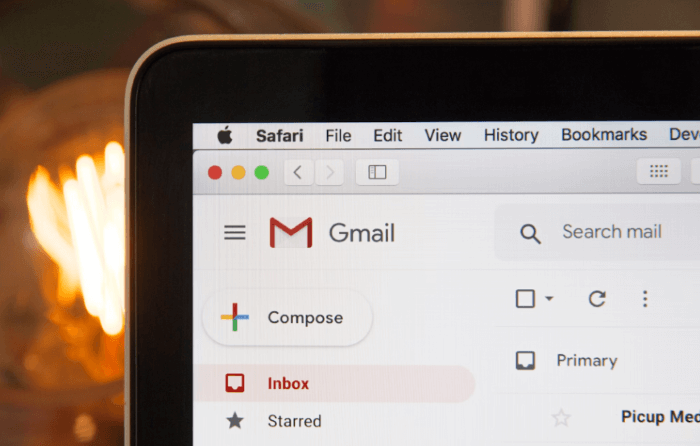Data Parsing Overview

Have you ever wondered how your devices turn raw data into something you can actually use? That’s where the process of parsing information comes in. It makes sense of the chaos, enabling you to parse analytics from various data sources. Whether you’re a tech novice or a seasoned pro, dive in with me to define parse data and discover why it’s a game-changer for anyone dealing with information.
What is Parsing?

So, actually, what is parse? In essence, it’s the process of taking raw information and transforming it into a usable and understandable format. It often involves analyzing a string of symbols, either in natural language or computer languages, and organizing it into a data structure that can be used by software.
Think about this: the process breaks down complex data structures, reorganizes them, and makes them readable for applications, software, and users. And yes, it’s crucial because information would remain in its raw, unstructured form without parsing. Thus, it would be practically useless.
But let’s discuss a parsing example.
- When you receive an email, the process helps your email client break down the message into readable text, attachments, sender information, and more.
- Similarly, when you browse the web, the process works behind the scenes to structure and present the vast information you see on your screen.
- As for parsing meaning in programming, it’s the first step in interpreting code. It involves analyzing the sequence of tokens or characters to understand their structure and parse data meaning.
- In web scraping, a data parser extracts information from HTML or XML documents and transforms it into structured info for analysis.
But why is parsing so important? According to a report by IDC, by 2025, information will grow at a rate of 61% per year, reaching an astonishing 175 zettabytes globally. Can you imagine making sense of all that info without a proper parsing tool?
The Benefits
The process offers numerous benefits. Here are some key advantages I want to highlight:
- Efficiency: Parsing automates info interpretation, saving time and reducing errors. It also ensures that info is processed quickly and accurately.
- Scalability: As info volumes grow, a data parsing tool can handle large datasets efficiently.
- Versatility: The process can be applied to various sources of information, including text files, emails, web pages, and databases. This versatility makes it invaluable for different industries and applications.
- Improved Decision-Making: Accurate and well-structured information can help businesses make better decisions. The process provides the foundation for parse analytics and helps uncover insights and trends that drive strategic choices.
On the whole, my experience also confirms that parsing, generally, helps in reducing manual errors and enabling automation.
How Does Data Parsing Work?

But how does the raw info get converted into something meaningful and valuable? It’s a multi-step process that breaks down and interprets information, ensuring it’s accurate and ready for use. Let’s discover the flow step by step.
Data Input
The first step is collecting raw info from various sources. At this stage, information can come from multiple formats, such as text files, web pages, emails, databases, and more. The parser takes in this unstructured info and is ready to convert it into a structured format.
For example, when scraping a website for product information, the raw HTML code of the web page is the input. This info might seem chaotic initially, but it contains all the necessary information to be extracted and organized.
Breaking Down Information
Once the information is collected, the next step is to break it down into smaller, manageable pieces. This involves tokenization, where the data is split into tokens or smaller elements. Tokens can be words, numbers, symbols, or any other significant unit.
This step is crucial in programming languages as it helps understand the syntax and structure of the code. The parser scans the input information, identifies patterns, and categorizes the tokens based on predefined rules.
Data Transformation
The next step is transforming the information into a readable and usable format. It is where the actual data parsing meaning is revealed. The parser interprets the tokens, reorganizes them, and converts them into structured data, preparing it for parse analytics.
Error Checking
During this phase, the parser validates the information to ensure it meets the required standards and formats. Any inconsistencies or errors are flagged and corrected.
During this phase, the parses verify that the data conforms to specific rules and formats. For example, they ensure that dates are in the correct format, numerical values fall within expected ranges, and text fields do not contain invalid characters.
According to a report by MIT Sloan study, data errors can cost companies up to 20% of their revenue. Effective error checking helps minimize these errors to ensure accuracy and reliability.
Output Generation
The final step is output generation. Once you parse the data, you can use it. The parser generates the output in the desired format, making it accessible for further analysis and application. The output can be in various formats, such as a database entry, a CSV file, or a JSON object.
Parsing Techniques

Parsing techniques are the various methods used to break down and interpret information. Let’s dive into some examples and see how to parse with each of them.
HTML
HTML parsing is one of the most common techniques, especially in web scraping. It involves extracting info from HTML documents, such as web pages. HTML parsers read the HTML code, identify the document’s structure, and extract relevant information based on predefined rules.
For example, when scraping a website for product prices, an HTML parser will look for specific tags and attributes that contain the price information. Tools like Beautiful Soup in Python simplify HTML parse and allow you to extract information with minimal effort.
Want to learn more about the technique? I’ve covered it in much detail in this guide.
JSON
JSON (JavaScript Object Notation) is a lightweight data interchange format that is both human-readable and easy for machines to parse and generate. JSON parsing involves reading the JSON data and converting it into a structured format suitable for applications.
This technique is widely used in APIs, where info is exchanged between servers and clients in JSON format. For instance, when you retrieve information from a REST API, a JSON parser will convert the raw JSON response into a structured format that your application can use.
XML
XML (eXtensible Markup Language) is a markup language used for encoding documents in a human-readable and machine-readable format. XML parsers read the document, identify its structure, and extract the relevant info. This technique is commonly used in web services and data interchange formats. Libraries like lxml in Python make the process efficient and easy to implement.
Regular Expressions
Regular expressions (regex) are patterns used to match character combinations in strings. Regex parsing involves using these patterns to find and extract specific info from a text.
This technique is powerful for parsing unstructured info that doesn’t follow a consistent format. For example, extracting email addresses from a text block using a regex pattern can quickly identify and extract the relevant information.
Machine Learning-Based
With advancements in technology, machine learning-based processes become popular. This technique uses machine learning algorithms to identify patterns and parse the data accordingly. For example, natural language processing (NLP) techniques can parse text information, identifying entities, sentiments, and other valuable information.
Streaming
The process commonly known as SAX (Simple API for XML) reads information from a source rather than loads the entire data into memory. This technique helps handle large datasets, minimizing memory usage and increasing efficiency.
How to Parse the Data

Now that you know what does parsing data mean, let’s move to the process itself. It can seem complex, but it becomes manageable and even straightforward with the right approach. Let me provide an easy guide.
- Step 1: Identify the Data Source
First, identify where your information is coming from. It can originate from web pages, emails, text files, APIs, or databases. Knowing your source lets you determine the best methods and tools to use.
- Step 2: Choose the Right Tool
Selecting the right parsing tool is crucial. Popular tools include Beautiful Soup for HTML, JSON.parse() in JavaScript for JSON, and ElementTree in Python data parsing for XML. These help automate the process, save time, and reduce errors.
- Step 3: Extract Relevant Data
Once you have the parsing tool, the next step is to extract the relevant info. For this, you should write scripts or use functions to identify and pull out the necessary information.
- Step 4: Transform Info into Desired Format
After extraction, transform the info into a usable format. It might involve converting it into a structured format like CSV, JSON, or a database entry.
- Step 5: Validate and Clean the Info
Ensure the information is accurate and free of errors. Check for inconsistencies, duplicates, and formatting issues. Clean the data to enhance its quality and reliability for analysis.
- Step 6: Use the Parsed Data
Finally, use your parsed info. Whether for analytics, reporting, or feeding into another application, the structured data is now ready to be utilized for your specific needs.
Automate Data Parsing

Automation of the process can save you time and increase accuracy. You can handle large datasets efficiently and minimize errors by leveraging scripts and tools.
Automated parsing involves setting up scripts that run at scheduled intervals or in response to specific triggers, enhancing parse analytics efficiency. Tools like Apache Nifi, Talend, and custom Python data parsing scripts can automate the process. According to a report by McKinsey, automation can reduce info processing times by up to 50%. So why not use it? Besides, it can also include integrating with ETL (Extract, Transform, Load) processes and using cloud-based parsing solutions.
Parsing Information Use Cases

From finance to healthcare, parsing is crucial across various industries. Let’s explore some compelling use cases.
- Web Scraping
In web scraping, you can extract valuable information from websites. For instance, e-commerce companies use the process to gather product prices and reviews for competitive analysis.
- Financial Analysis
Financial institutions parse the data to make informed trading decisions. The process allows them to extract and analyze stock prices, trading volumes, and economic news, which drives better investment strategies.
- Natural Language Processing (NLP)
NLP relies heavily on the process to understand and process human language. Text parsing benefits applications like chatbots, sentiment analysis, and machine translation.
- Email Filtering
Email services use the process to filter spam and categorize messages. By analyzing email content and metadata, parsing ensures that important emails reach your inbox while spam is filtered out.
As for me, I most frequently use it also for log file analysis, data migration, and data integration.
Building vs. Buying a Data Parser — What to Choose

You can either build or buy a parser — the choice is yours. Eventually, you should ground it on several factors, like cost, time, and expertise.
When to Build a Solution
Building your parser gives you complete control and customization. It’s ideal for unique needs and ensures the parser fits perfectly into your existing systems. However, this approach requires significant time and technical expertise. Developing custom data parsing software can take months and cost up to three times more than off-the-shelf solutions.
When to Buy a Solution
Purchasing a parser saves time and resources. Pre-built solutions are ready to deploy, often with support, and regularly updated. This cost-effective option allows for quick integration, which suits businesses that want to start parsing immediately.
Conclusion
As you can see, parsing information can make sense of chaos by transforming info into a structured format. Whether you decide on techniques or choose to build or buy a parser, this process can indeed supercharge your decisions. Embrace it to streamline operations, boost accuracy, and unlock your data’s full potential. Dive in and discover its power!
FAQ
The process is used in web scraping, financial analysis, natural language processing (NLP), and email filtering, to name a few. It helps convert raw info into structured formats for better analysis.
The parse process breaks raw information into smaller, manageable components. This process makes the data readable and usable for various applications and analyses.
To parse the data means to analyze and convert raw information into a structured format.
Yes, you can automate it with a data parsing tool and script. Automation increases efficiency, reduces errors, and saves time. Thus, it’s ideal for large datasets.
Popular tools include Beautiful Soup for HTML, JSON.parse() for JSON, and ElementTree for XML.
It improves information quality, enhances decision-making, and increases operational efficiency. It also allows businesses to transform raw info into actionable insights and drive better strategies and outcomes.
Challenges include handling large volumes of info, dealing with errors and inconsistencies, and managing different data formats. I also struggled with maintaining performance and ensuring data security, yet those are relatively easy to solve with the best proxy servers.
